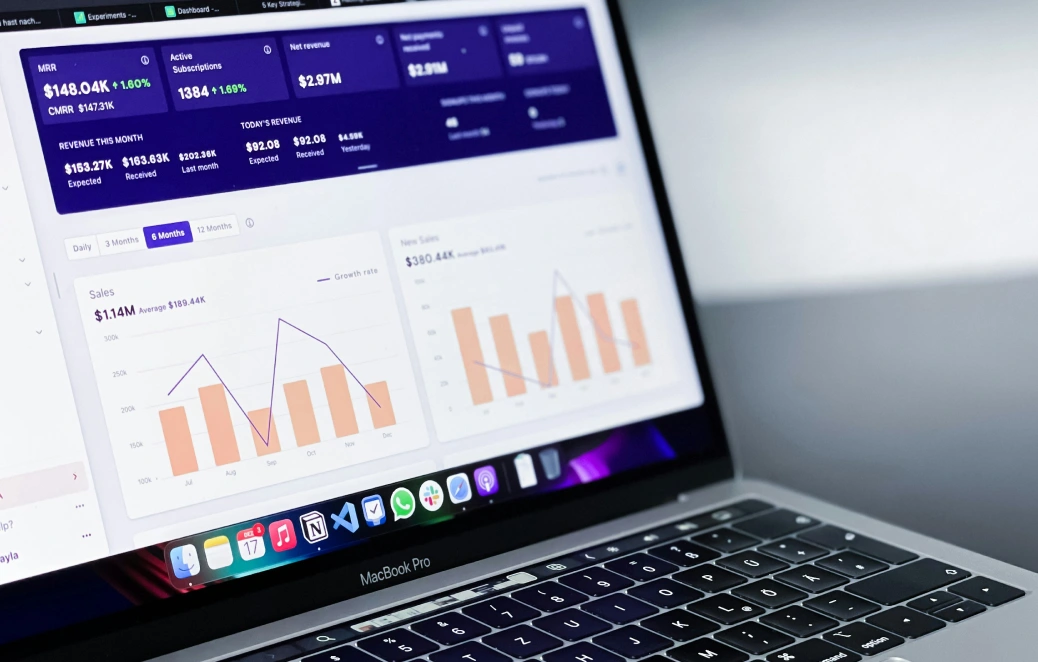3 Ways To Measure Effectiveness Of A Shareholder Meeting

Chief Executive Officer

Shareholder meetings are critical for transparency and accountability, but how do you know if they’re effective? Here’s a quick summary of three ways to measure success:
- Post-Meeting Surveys: Collect feedback on communication clarity, agenda relevance, and technical performance. Use digital tools for quick distribution and analysis.
- Attendance and Participation Data: Track registration vs. attendance, voting rates, and engagement during Q&A sessions to gauge shareholder involvement.
- Alignment with Objectives: Set measurable goals (e.g., resolution approval rates) and evaluate whether the meeting met them.
These methods help identify areas for improvement and ensure meetings deliver value to stakeholders.
Method 1: Post-Meeting Surveys and Feedback Analysis
Post-meeting surveys are an effective way to measure shareholder satisfaction and identify areas for improvement. By collecting feedback shortly after the meeting, while the experience is still fresh, these tools can provide valuable insights to guide future events.
Timing and ease of access play a big role in the success of these surveys. Sending them out within 24 hours of the meeting ensures higher response rates, as attendees are more likely to recall details and share thoughtful feedback. Digital platforms make this process seamless, allowing for instant survey distribution and automated follow-up reminders. This quick turnaround not only boosts participation but also improves the quality of the feedback gathered.
Key Metrics for Feedback Surveys
To get a clear picture of meeting success, surveys should focus on specific metrics. Using a combination of rating scales and open-ended questions can help collect both measurable data and deeper insights.
One critical metric is communication clarity. Questions should evaluate whether financial data was presented in a way that shareholders could easily understand, whether speakers clearly conveyed key points, and if technical content was accessible to non-experts. Pairing ratings with open-ended follow-ups can uncover nuanced feedback.
Another important area is content relevance. This measures how well the meeting agenda aligns with shareholder interests. Did the topics address pressing concerns? Were the discussions meaningful to the company’s current challenges and priorities? These insights can help fine-tune future agendas to better meet shareholder expectations.
For hybrid or virtual meetings, technical feedback is essential. Surveys should assess the quality of audio and visuals, the reliability of the streaming platform, and the ease of using interactive features. Poor technical performance can hinder engagement, so understanding these issues is key to improvement.
Finally, surveys should include open-ended questions that invite actionable suggestions. Specific recommendations from attendees can provide event planners and corporate teams with practical ideas for refining future meetings.
Benefits of Digital Survey Platforms
Digital survey tools simplify the entire feedback process, from distribution to analysis. These platforms allow for anonymous responses, encouraging shareholders to provide honest and candid feedback.
Another advantage is real-time data aggregation, which enables teams to start analyzing results as soon as surveys are submitted. Advanced tools can generate instant reports that highlight trends, satisfaction scores, and recurring themes in written feedback. This quick access to insights helps companies address any pressing issues without delay.
Automated features, like reminder systems, also play a big role in boosting response rates. By sending follow-up messages to non-respondents at the right intervals, these tools ensure more shareholders complete the survey, giving companies a fuller picture of overall sentiment.
Modern platforms often come with advanced analytics that can identify patterns and correlations in the feedback. For example, they can reveal how specific factors - like agenda relevance or technical performance - impact overall satisfaction. This helps prioritize improvements for future meetings.
How Corporate Optics Supports Feedback Analysis

Corporate Optics offers a streamlined approach to managing shareholder feedback, turning survey data into actionable insights. Their platform automates the survey process, ensuring feedback collection begins immediately after the meeting concludes. This not only maximizes response rates but also reduces the administrative workload for corporate teams.
The platform goes beyond basic satisfaction scores by identifying trends across multiple meetings. This allows companies to track progress over time and evaluate the effectiveness of changes made based on previous feedback.
Corporate Optics also provides custom survey design services, tailoring questions to align with a company’s specific goals and governance needs. This ensures that the feedback collected is both relevant and actionable.
Method 2: Attendance and Participation Analytics
Attendance and participation data provide a clear picture of how engaged shareholders are and how effective a meeting has been.
Tracking Attendance and Engagement
One of the simplest ways to measure success is by comparing registration numbers to actual attendance. A noticeable gap between the two could point to issues like inconvenient scheduling, unappealing content, or even technical difficulties that prevent participation.
Key Metrics for Participation
Attendance numbers alone don't tell the whole story. Diving into specific engagement metrics can reveal much more.
- Voting participation rates: These are crucial for shareholder meetings. A high rate of voting shows shareholders are actively involved in key governance decisions.
- Question submissions during Q&A sessions: The number of questions submitted reflects how willing and comfortable shareholders feel about engaging directly with management.
Tools for Real-Time and Post-Event Reporting
Modern tools make it easier than ever to track and analyze participation data, both during and after the meeting.
- Live dashboards: These provide a real-time view of attendance and engagement, helping organizers make on-the-spot adjustments if needed.
- Automated reporting systems: After the event, these tools compile detailed summaries of engagement metrics, offering insights that can shape future meetings.
Corporate Optics offers an analytics platform that delivers both real-time engagement tracking and thorough post-event reports. This allows companies to measure shareholder involvement effectively and fine-tune their approach for upcoming meetings.
sbb-itb-ae35a94
Method 3: Evaluating Alignment with Meeting Objectives
One of the most reliable ways to assess the success of a shareholder meeting is to determine whether it achieved its intended goals. Without clear objectives, gauging the meeting's effectiveness becomes nearly impossible. Aligning the meeting's outcomes with its objectives also ties into the broader themes of engagement and feedback, creating a comprehensive framework for evaluation.
Setting Clear, Measurable Objectives
Start by defining specific, measurable goals before the meeting takes place. These goals act as a roadmap for success and should align with your company's overall governance and communication strategies.
For objectives to have an impact, they need to be quantifiable. Examples of measurable goals include tracking approval rates for resolutions, evaluating how effectively information was communicated, or gauging stakeholder confidence in the company's leadership. Adding concrete, time-bound targets - like setting a specific number of Q&A questions or aiming for a certain level of participation in key activities - ensures clarity and accountability.
Measuring Objective Completion
Once objectives are in place, it’s essential to monitor their progress during and after the meeting. This can involve evaluating whether the agenda was followed and analyzing voting results to measure both efficiency and stakeholder sentiment.
Post-meeting follow-ups also play a critical role in assessing long-term success. For instance, tracking the timely execution of initiatives discussed during the meeting can highlight whether the event led to meaningful action. Additionally, brief post-meeting evaluations can help determine if complex strategies were communicated effectively, boosting stakeholder understanding and confidence in the company’s direction.
Using KPIs with Event Analytics
To take objective measurement further, integrate Key Performance Indicators (KPIs) with event analytics. Advanced analytics platforms allow you to track progress against your goals in real time, providing actionable insights as the meeting unfolds and enabling on-the-spot adjustments if needed.
For example, Corporate Optics' event reporting tools offer a streamlined way to monitor metrics like voting patterns, agenda adherence, and stakeholder engagement through a unified dashboard. This kind of data-driven approach makes it easier to assess objective performance and compare results across multiple meetings.
By combining objective tracking with other metrics, you can uncover patterns and predictive insights. For instance, you might notice that meetings with higher pre-event engagement - like registration or early question submissions - tend to perform better overall. These insights can help refine your planning and strategy for future meetings.
Incorporating automated reporting tools simplifies the process of capturing and analyzing objective completion data. This shifts meeting evaluation from subjective impressions to clear, actionable metrics, laying the groundwork for continuous improvement in how you engage with shareholders.
Conclusion: Improving Shareholder Meeting Outcomes
Evaluating the success of shareholder meetings isn't just about collecting data - it's about creating a cycle of continuous improvement that reshapes how you connect with stakeholders. The methods discussed here work together to provide a well-rounded perspective on your meeting's impact and areas that could use fine-tuning.
Post-meeting surveys and feedback analysis offer a direct line to understanding attendee satisfaction and the clarity of your communication. Pairing this with attendance and participation analytics gives you a fuller picture of engagement levels and stakeholder sentiment. Lastly, assessing alignment with meeting objectives ensures your meetings drive tangible business results.
These methods aren't isolated - they're interconnected. For instance, low participation rates might hint at missed objectives, while negative feedback could shed light on why attendance is dropping. By examining these elements together, you can uncover underlying issues and make precise adjustments.
Corporate Optics simplifies this process with its integrated event planning and analytics platform. From tracking registrations and monitoring real-time engagement to analyzing post-event feedback, their platform consolidates everything into a single dashboard. This streamlined approach saves you from juggling data from multiple sources and provides clear, actionable insights to guide your next shareholder meeting.
Start by establishing baseline metrics for your current meetings. Over time, tracking these metrics will help you identify trends that individual events might not reveal. This not only highlights the return on investment in your shareholder engagement efforts but also strengthens your case when presenting results to executive leadership.
The most forward-thinking organizations view shareholder meetings as strategic opportunities to connect, not just as compliance checkboxes. By adopting these measurement strategies, you're not just reviewing past performance - you’re laying the groundwork for more engaging and impactful shareholder experiences. Use these insights to refine and elevate your engagement strategy, ensuring each meeting delivers greater value.
FAQs
How can digital survey tools improve feedback collection after a shareholder meeting?
Digital survey tools make gathering feedback a breeze, offering a quicker, more efficient, and real-time way to collect responses. They boost participation by giving attendees easy options to share their opinions - whether it’s through email links, QR codes, or mobile-friendly platforms.
Beyond convenience, these tools deliver meaningful insights by automating data analysis. This helps organizations spot trends in attendee satisfaction and engagement effortlessly. Plus, by streamlining follow-ups and ensuring consistent feedback, they enable businesses to improve future shareholder meetings and strengthen overall communication.
Why do some shareholders register for meetings but don’t attend?
There are plenty of reasons why shareholders might register for a meeting but not show up in the end. For starters, practical hurdles like long travel distances or inconvenient scheduling can make attending in person a real challenge. Another big factor? A lack of interest or engagement with the meeting’s agenda. Shareholders might feel their presence won’t make much of a difference, especially if they’ve already handed over their voting rights to proxies.
Then there’s the unpredictability of life - things like sudden health issues, family emergencies, or conflicting commitments can easily derail plans to attend. Offering virtual meeting options, emphasizing why the meeting matters, and providing more flexible scheduling are smart ways to tackle these obstacles and boost attendance.
What are the best ways to set and measure goals for a successful shareholder meeting?
To run a successful shareholder meeting, start by establishing specific, measurable goals that align with the meeting's purpose. These might include boosting engagement, ensuring open communication, or securing a voting quorum. Once you've set your goals, track progress using practical metrics like:
- Attendance rates to gauge how many shareholders participated.
- Participation levels, such as the number of questions asked or votes submitted.
- Post-meeting surveys to collect feedback on satisfaction and the clarity of communication.
By consistently comparing these metrics to your objectives, you'll gain valuable insights into the meeting's effectiveness and pinpoint ways to enhance future events.
Related Blog Posts









